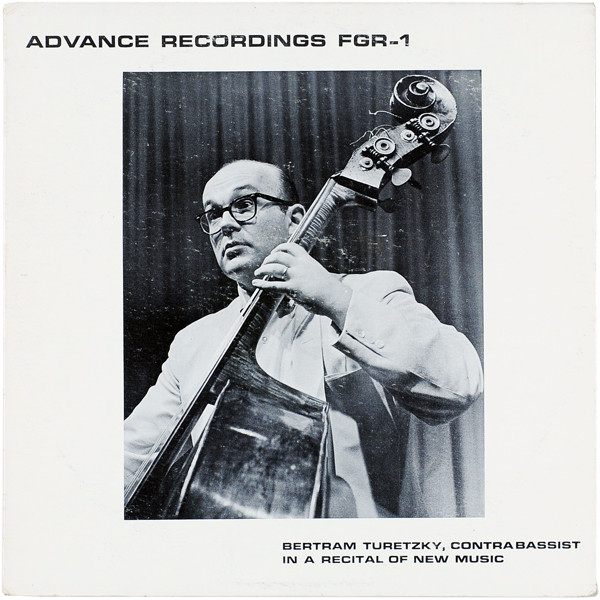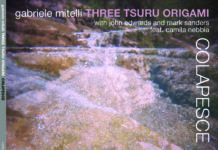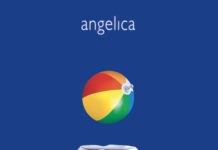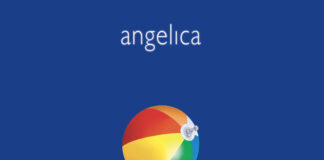Fino ad un paio di decenni fa il contrabbasso è stato ampiamente trascurato come strumento solista dalla voce complessa. Relegato soprattutto alle sue funzioni tradizionali di supporto all’interno degli ensembles, il contrabbasso ha dovuto aspettare fino alla seconda metà del 20° secolo per diventare un’importante strumento solista nell’ambito della nuova musica. La rinascita del contrabbasso passa da due fonti primarie: i miglioramenti tecnici relativi allo strumento e gli sforzi pionieristici del contrabbassista Bertram Turetzky, che ha sviluppato un repertorio stimolante per lo strumento. Il completamento attuato da Turetzky rimane un punto di riferimento essenziale per i contrabbassisti contemporanei, molti dei quali sono attivamente impegnati nella pratica quotidiana, sviluppando ed estendendo le innovazioni introdotte quaranta/cinquanta anni fa, innovazioni che sono state oramai assorbite nei contesti fondamentali della tecnica del contrabbasso.
______________________________________________________________________________
As recently as a few decades ago, the double bass was largely overlooked as a solo instrument of complex voice. Relegated for the most part to its traditional support function within ensembles, the double bass would have to wait until the second half of the twentieth century to find its voice liberated and its rich sound qualities cultivated and explored in depth. Now, though, the situation has changed to such an extent that solo bass releases and performances by adventurous improvisers and art music instrumentalists have become an essential and anything but rare element in new music.
The ascendency of the double bass coincides with the rise of interest in treating timbre as an independent musical element. As a large string instrument, the double bass comes very close to the idea, expressed by Robert Erickson in Sound Structure in Music, of the single instrument as a collection of contrasting sounds in tandem with or independent of pitch. It can take advantage of the variety of sound production techniques common to and increasingly used by all of the string instruments since the 19thcentury—arco, pizzicato, col legno battuto, various bow placements and so forth—while its compass gives it unique characteristics amenable to producing rich and complex sonorities. Its low fundamentals facilitate the perception of individual lower partials and give it the potential to produce klangfarbenmelodie on a single note, particularly when played on open strings. These latter, given the right kind of bow articulation, may be heard as a set of shifting pitches outlining a chord or even as something approaching pure timbre without pitch.
The contemporary renaissance of the double bass traces back to two major sources: Technical improvements related to the instrument, and pioneering efforts by double bassist Bertram Turetzky to develop a repertoire that would take the double bass beyond its usual role as an accompanying instrument.
A simple but ultimately revolutionary improvement to the double bass was accomplished with the introduction of metal strings in the 1960s. This more modern type of string came into general use on the bass after they had been adopted for the smaller stringed instruments. Metal strings produce a clearer tone and have a more complex overtone structure than the traditional gut strings they replaced, which meant two things: First, that double bassists could hear themselves better and thus could play with more accurate intonation, and second, that they could also begin to produce a greater range of timbres with more control and consistency. In addition, bassists could take advantage of metal strings’ greater responsiveness by developing and using more nuanced bowings. All of this meant that the double bass’s capacity for klangfarbenmelodie was widely expanded.
The second technical improvement was not to the instrument itself but rather to the technologies of sound amplification and reproduction, which have had profound musical implications. These changes, which dramatically impacted sound production and recording generally, also had an effect on double bass technique.The usually quiet instrument could now raise its voice, as it were and could, through use of contact and other microphone systems, be integrated into the burgeoning electronic means of sound modification and enhancement. The interface with electronics further expanded the palette of potential timbral resources available to bassists.
 Enter Bertram Turetzky. Turetzky (b. 1933), a native of Norwich, Connecticut USA, obtained a degree in music history from the University of Hartford and played swing jazz as well as orchestral music with the Hartford Symphony Orchestra in the 1950s and 1960s. At about this time Turetzky began to commission composers to write for him, in the process assembling a repertoire of music for double bass as a solo voice. He was able to do this at least in part by discovering or creating techniques and sounds that would distinguish the double bass from the cello. In essence, he was reinventing the instrument as a highly versatile producer of a vast range of timbres.
Enter Bertram Turetzky. Turetzky (b. 1933), a native of Norwich, Connecticut USA, obtained a degree in music history from the University of Hartford and played swing jazz as well as orchestral music with the Hartford Symphony Orchestra in the 1950s and 1960s. At about this time Turetzky began to commission composers to write for him, in the process assembling a repertoire of music for double bass as a solo voice. He was able to do this at least in part by discovering or creating techniques and sounds that would distinguish the double bass from the cello. In essence, he was reinventing the instrument as a highly versatile producer of a vast range of timbres.In 1964 and 1969-70 Turetzky issued the landmark recordings Recital of New Music and The Contemporary Contrabass. Both of these releases featured new works for solo double bass by composers such as Ben Johnson, George Perle, Donald Erb, Pauline Oliveros and Robert Erickson. Many of the works situated the double bass in new contexts—integrating it with electronics, for instance, or pairing it with unusual partners such as a flute or oboe. Of great significance was the composers’ willingness to draw on the new techniques and timbres Turetzky had been developing. Recital of New Music, for example, included Charles Whittenberg’s Electronic Study II with Contrabass (1962), which had been written for Turetzky and is the first work for double bass and electronics. The electronic component consists of sound produced by sinusoidal oscillators and square wave generators as well as white noise. These sounds run in parallel to the double bass part, which is built around a five-note row heard clearly in the five pizzicato notes that end the piece. The bassline, which includes pizzicato and arco passages, contrasts with the deliberately artificial electronic sounds; the two voices push against and pull at each other, creating a sonic tension woven deep into the texture of the piece. A recent recording of the piece by Arni Egilsson demonstrates the piece’s continuing relevance as a composition of timbral contrast long after the novelty of the electronic sounds has worn off. George Perle’s Monody II (1962), also written for Turetzky, is a characteristically quasi-tonal twelve-tone work that punctuates pizzicato—played with the thumb rather than the fingers–and arco sections with occasional extended technical effects. Like Whittenberg’s Electronic Study II, Monody II is of continuing interest; a recent interpretation of the piece was released by Robert Black on the 2011 double CD set The Modern American Bass.
The Contemporary Contrabass features fewer but longer compositions—one each by John Cage, Pauline Oliveros and Ben Johnston, the latter two having written their contributions for Turetzky. Johnston’s Casta Bertram (1969) is a kind of neo-Dada collage of non-musical sounds, scraps of music history and extended string techniques. Turetzky taps the body of the bass, strikes the strings with the wood of the bow while sliding his left hand up and down the string, often while vocalizing or whistling. In between, he plays fragments of Bach and Beethoven. Oliveros’ Outline for Flute, Percussion and String Bass (1963) is an unconventionally notated, open-form piece that leaves pitches unspecified in parts and calls for improvisation. Turetzky’s realization, which includes his wife Nancy on flute and Ronald George on mallet percussion and drums, is notable for a mostly sparse texture marked by leaps of register and dynamics. Flurries of activity alternate with silences or slow, quiet sounds; the bass intervenes as often as not with brief stabs of sound—glissandi, harmonics, tremolo bowing and the like.
 Just a few years after the release of The Contemporary Contrabass Turetzky published a book—also titled The Contemporary Contrabass (U California Press, 1974)—inventorying and describing the new techniques and effects he had been developing. Turetzky envisioned the book as “articulat[ing] the real musical image and potential” of the double bass, and to that end he organized it into chapters setting out a variety of techniques for pizzicato, bowing, using the bass as a percussion instrument, mixing vocal and speech sounds with instrumental sounds, using harmonics and scordatura, and enhancing the instrument’s natural sound with electronics and amplification. He illustrated these new ways of playing and writing for the instrument with copious musical examples drawn from works by Donald Erb, George Crumb, Barney Childs, Jon Deak, Kenneth Gaburo and Richard Moryl among others, many of which had been written for him.
Just a few years after the release of The Contemporary Contrabass Turetzky published a book—also titled The Contemporary Contrabass (U California Press, 1974)—inventorying and describing the new techniques and effects he had been developing. Turetzky envisioned the book as “articulat[ing] the real musical image and potential” of the double bass, and to that end he organized it into chapters setting out a variety of techniques for pizzicato, bowing, using the bass as a percussion instrument, mixing vocal and speech sounds with instrumental sounds, using harmonics and scordatura, and enhancing the instrument’s natural sound with electronics and amplification. He illustrated these new ways of playing and writing for the instrument with copious musical examples drawn from works by Donald Erb, George Crumb, Barney Childs, Jon Deak, Kenneth Gaburo and Richard Moryl among others, many of which had been written for him.Admittedly, some of the instrumental techniques and compositional styles invented or developed in the 1960s and 1970s now sound of their time. But although the era can properly be characterized as unusually conducive to novelty, not all of what was done was mere novelty. Turetzky’s accomplishment remains an essential point of reference for contemporary bassists, many of whom are actively engaged in using, developing and extending the innovations introduced forty and fifty years ago—innovations notable for having been absorbed into the mainstream of double bass technique.







